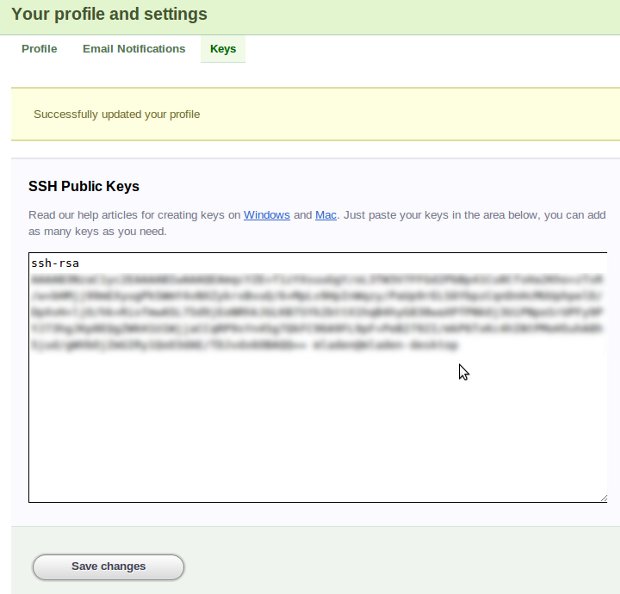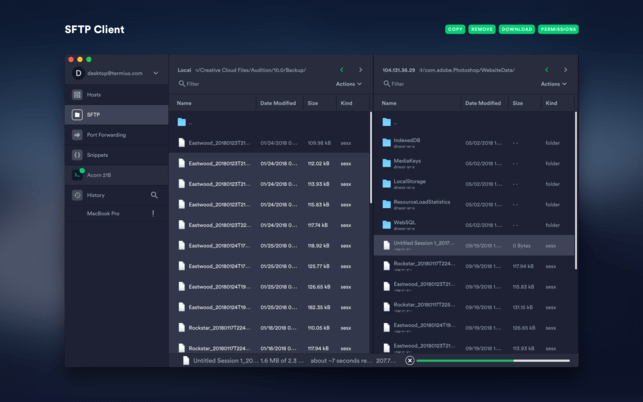

- Ssh client for mac .pem terminal how to#
- Ssh client for mac .pem terminal install#
- Ssh client for mac .pem terminal generator#
- Ssh client for mac .pem terminal archive#
- Ssh client for mac .pem terminal password#
Go ahead and click “Yes” to this request ( learn more). PuTTY will first ask you to confirm the server’s host key and add it to the cache. Select the session you want to start (in case that you have saved more than one session) and click the “Open” button to open an SSH session to the server. In the “Session” section, click on the “Save” button to save the current configuration. In the “Connection -> Data” section, enter the username bitnami into the “Auto-login username” field, under the “Login details” section. ppk) you’ve previously obtained in the step above. In the “Connection -> SSH -> Auth” section, browse to the private key file (.
Ssh client for mac .pem terminal how to#
Refer to the FAQ to learn how to obtain your SSH credentials for your client. Obtain your SSH credentials in order to allow the authentication against the server. Then, click “Save” to save the new session so you can reuse it later. In the PuTTY configuration window, enter the host name or public IP address of your server into the “Host Name (or IP address)” field, as well as into the “Saved Sessions” field. ppk key file format.ĭouble-click the putty.exe file to bring up the PuTTY configuration window. Once the private key has been imported, click the “Save private key” button to convert and save the key in PuTTY’s.
Ssh client for mac .pem terminal generator#
Launch the PuTTY Key Generator by double-clicking the puttygen.exe file in the PuTTY installation directory.Ĭlick the “Load” button and select the private key file in. ppk format, you may skip this step.įollow the steps below to convert your. ppk format before you can use it with PuTTY. pem format, it is necessary to convert it to PuTTY’s own. Step 2: Convert your PEM private key to PPK format (optional)
Ssh client for mac .pem terminal archive#

To access the server via SSH tunnel using PuTTY on a specific port using an SSH tunnel, you need to have it configured in order to allow connections to your server. In the instructions below we have selected PuTTY, a free SSH client for Windows and UNIX platforms. In order to access your server via SSH tunnel you need an SSH client.

Connect with an SSH client on Windows using an SSH key NOTE: If you specified a custom username for SSH access when deploying your server, replace bitnami in the examples below with the correct username. TIP: Refer to these instructions to learn how to obtain your SSH credentials.
Ssh client for mac .pem terminal password#
The SSH password that you have entered during the server deployment is the same that you will use to access your server through an SSH client and to access the server through an SSH tunnel. Click on your deployment, you will see a summary with the related information: If you have copied and pasted your SSH key file during the deployment of the server, you can retrieve your key in the “Resource Group -> Deployments” section. If you are using the Microsoft Azure Marketplace, you will have been presented with a choice of using either an SSH password or an SSH key pair at the time of deploying the server as shown below: Obtain SSH credentials from the Azure Marketplace Note the server IP address on the same page.
Ssh client for mac .pem terminal install#
Install the Azure Command Line Interface (CLI).Locate deployment and resource group IDs.Give SSH access to another person, such as a customer.Learn about the Bitnami Configuration Tool.Configure third-party SMTP for outbound emails.Remove storage containers used by Bitnami applications.Understand what data Bitnami collects from deployed Bitnami stacks.



 0 kommentar(er)
0 kommentar(er)
